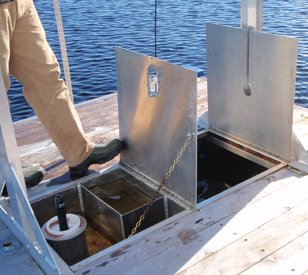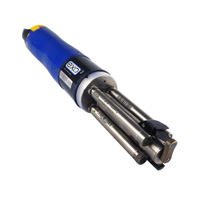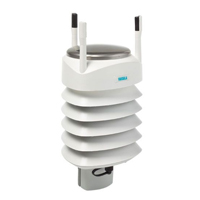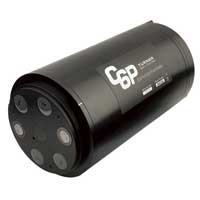 The Penobscot River is at the heart of Penobscot Indian culture. For hundreds of years, the tribe has looked on it as a source for food and medicine, as well as a means of transportation. But in recent years, algal blooms have gotten worse in the river, believed to be caused by phosphorus discharges from a paper processing plant.
The Penobscot River is at the heart of Penobscot Indian culture. For hundreds of years, the tribe has looked on it as a source for food and medicine, as well as a means of transportation. But in recent years, algal blooms have gotten worse in the river, believed to be caused by phosphorus discharges from a paper processing plant.
Not long after the plant was fined and ceased operations, the Penobscot Indian Nation secured funding to launch a water quality monitoring platform on the river. The platform serves as a guardian both to the Penobscot River and to the culture that still thrives around it today.
The platform was deployed in Dolby Pond, one of the Penobscot River’s impoundments. It launched in 2007 after an especially bad algal bloom that was connected to the paper mill upstream. After a short boat ride out to it, the floating platform allows workers with the Penobscot Nation’s Water Resources Program to check on monitoring equipment at a comfortable standing position. It was built by the Nation as a hands-on project that helped connect tribe members to the effort by giving them a way to chip in.
Community shared data
 A solar panel onboard the platform provides power for environmental sensors that monitor the Penobscot River’s water quality. All of them connect to a NexSens SDL (Submersible Data Logger) that records their measurements and then transmits the information to technicians with the Nation who view it on a custom website they developed. The site keeps water quality managers updated while also making data accessible to other tribe members who care about the river.
A solar panel onboard the platform provides power for environmental sensors that monitor the Penobscot River’s water quality. All of them connect to a NexSens SDL (Submersible Data Logger) that records their measurements and then transmits the information to technicians with the Nation who view it on a custom website they developed. The site keeps water quality managers updated while also making data accessible to other tribe members who care about the river.
Aboard the monitoring platform sits a Vaisala WXT-series Multi-Parameter Weather Sensor that tracks essential weather parameters like wind speed and direction, precipitation, barometric pressure, temperature and humidity. This is joined by a LI-COR LI-190 PAR Sensor that measures photosynthetically active radiation. Both of these take useful measurements for studying and predicting algal blooms because of the sizable role that weather and sunlight play in the algal bloom process.
Beneath the platform, there is a YSI Multi-Parameter Water Quality Sonde that collects measures of the Penobscot River’s pH, temperature, dissolved oxygen and turbidity. Those are backed up by a Turner Designs C6 Multi-Sensor Platform that captures concentrations of several key algae markers: chlorophyll-a, colored dissolved organic matter, phycocyanin and turbidity.
Results of the monitoring have yielded promising results, and no large-scale algal blooms have come flowing into Dolby Pond. This is a good thing to members of the Penobscot Indian Nation, who have come to see the monitoring platform as a useful safeguard for those living around the river, as well as a connection to the tribe’s past.
The X2-SDL Submersible Data Logger is a rugged, self-powered data logging system with optional cellular, satellite, or radio communications.
EXO3 is a purpose-built sonde for monitoring major water quality parameters, including: pH, conductivity, temperature, turbidity and dissolved oxygen.
The Vaisala WXT536 Multi-Parameter Weather Sensor simultaneously measures air temperature, humidity, pressure, rainfall and wind in a compact platform with optional heating.
The LI-190R Quantum Sensor measures photosynthetically active radiation (PAR), which is energy that drives photosynthetic reactions in plants.
The C6P Submersible Fluorometer can be configured with up to six optical sensors ranging from the deep ultraviolet to the infrared spectrum.





